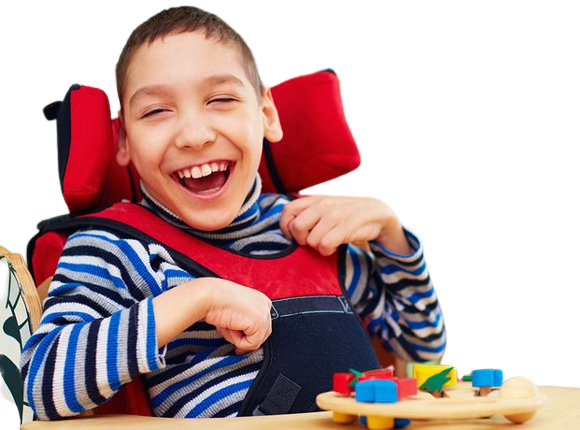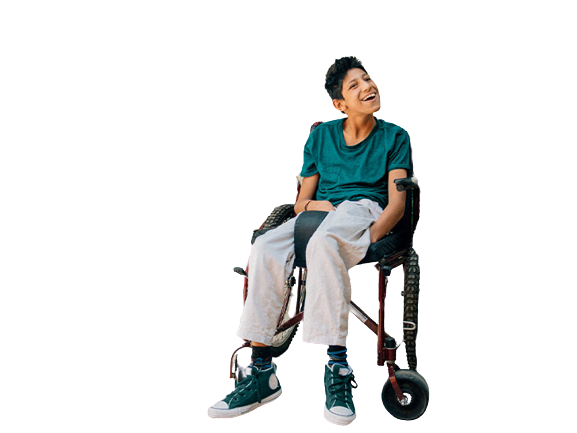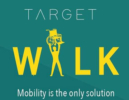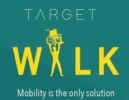Cerebral Palsy impairs mobility and posture. Cerebral palsy is an umbrella term for a multitude of disorders of muscle activation and/or coordination. It’s a lifelong ailment that seldom worsens. Best cerebral palsy therapy doesn’t alter brain injury or disability. It’s caused by pregnancy or birth-related brain injury. Cerebral palsy impairs mobility, muscular control, coordination, tone, reflex, posture, and balance. Growing cerebral palsy children have trouble developing muscular movements. Visual, learning, hearing, speech, epilepsy, and intellectual deficits are common in cerebral palsy.
Cerebral palsy symptoms vary in severity. Cerebral Palsy may not weaken the patient since the portion of the brain that regulates thinking is different from the one that governs movement. With the finest and most affordable cerebral palsy treatment in Gurgaon, many patients may have normal IQ despite motor and mobility impairments.
In most cultures, having children is regarded to be a blessing. Parents provide their children with the best possible care they are capable of giving. However, in spite of their greatest efforts, there are certain circumstances that are beyond their capabilities. What if their child is diagnosed with any kind of mental disorder? When we talk about conditions, we should mention that cerebral palsy, which affects a significant number of children, is expanding its base of support. This kind of disease is more likely to affect babies who have just been born. In the same way that there is a solution to every issue, Target Walk, which provides the best cerebral palsy treatment in Gurgaon, is there to assist your child in overcoming this condition. They take measures to ensure that your kid will not go through this experience alone themselves. Let’s obtain some more in-depth knowledge regarding cerebral palsy first, so we can go forward with confidence.

Symptoms of Cerebral Palsy
Let’s delve a little further and learn more about the indications of this condition so that parents will be able to recognize the signs in their children at an early age and start treatment for their children as soon as possible for a speedier recovery.
The symptoms of Cerebral Palsy might vary greatly from one individual to the next. A person who has severe Cerebral Palsy may need the use of specialized equipment in order to be able to walk, or they may not be capable of walking at all and may require care for the rest of their lives. A person who has Cerebral Palsy of a milder severity, on the other hand, could walk a bit awkwardly but may not need any further assistance. Although a person’s specific symptoms may shift during their lifespan, cerebral palsy (CP) does not worsen over time.
Mobility and posture are both challenging for those who have cerebral palsy (CP). Many additionally struggle with co morbidities such as intellectual incapacity, epileptic seizures, difficulties with vision, hearing, or speech; alterations in the spine (such as scoliosis); and joint issues (such as contractures).
Here’s a proper age guide to know the symptoms
When it comes to infants less than six months of age:
- As you take him/her up when he/she is resting on his/her back, his/her head falls back when you do so.
- He/she feels stiff
- He/she feels floppy
- When he/she is carried cradled in your arms, it seems as if he/she is overextending his/her back and neck, giving the impression that he/she is always trying to get away from you.
- When you take him/her up, his/her legs become rigid and they cross over or scissor in a crisscross pattern.


When applied to an Infant Who Is Older Than Six Months of Age
- It doesn’t matter which way you turn him/her; he/she won’t flip over.
- He/she is unable to clasp both of his/her hands together.
- The act of raising him/her hands to his/her lips is tough for him/her.
- He/she extends just one hand while keeping the other one tightly clasped behind his/her back.
When applied to an Infant Who Is Older Than Ten Months of Age
- He/she moves in an asymmetrical way as he/she crawls, propelling himself forward with one palm and leg while pulling the other hand and leg.
- He/she moves about by hopping on his/her knees or scooting around on his buttocks, but he/she does not crawl on all fours.
Causes of Cerebral Palsy
- Cerebral palsy may be caused by brain damage or defective brain structure-function. This disorder damages the brain region responsible for coordination, movement, and posture.
- Most brain injury occurs before birth or in early childhood. However, there are various risk factors and possible causes.
- Abnormal brain development may be hereditary or genetic. Certain maternal infections may cause cerebral palsy. The problem may emerge if the brain doesn’t get enough oxygen. Infant jaundice may cause cerebral palsy.
- Injuries to the head from a fall or accident may cause cerebral palsy.
- Infections that affect the mother and have the potential to harm the unborn child
- A disruption in the blood flow to the baby’s growing brain during pregnancy may be fatal (fetus)
- Asphyxia is a condition in which the brain does not get enough oxygen due to delivery or tough labour.
- Infections that occur after birth and cause inflammation either inside or around the brain
- in certain instances, delivery occurs too soon.
Cerebral Palsy types
Cerebral Palsy is classified by its major movement dysfunction. Depending on which brain regions are injured, one or more movement problems may occur:
- Muscles stiff (spasticity)
- erratic motions (dyskinesia)
- Unbalanced and clumsy (ataxi
Four main kinds of Cerebral palsy are:
Spastic
This cerebral palsy is the most prevalent. 80% of Cerebral Palsy patients have spasticity.
Spastic Cerebral Palsy causes high muscular tone. Their stiff muscles cause clumsy motions. Spastic Cerebral Palsy is defined by afflicted bodily parts.
- Spastic diplegia/diparesisIn this kind of Cerebral Palsy, the legs are stiffer than the arms. People with spastic diplegia may have trouble walking because their legs draw together, bend inside, and cross at the knees (also known as scissoring).
- Spastic hemiplegia/hemiparesis affects just one side of the body, generally the arm.
- Spastic quadriplegia affects all four legs, the torso, and the face. People with spastic quadriparesis can’t walk and frequently have intellectual impairment, seizures, or visual, hearing, or communication issues.
Dyskinetic Cerebral Palsy
(also includes choreoathetoid, athetoid, and dystonic cerebral palsies)
Dyskinetic Cerebral Palsy makes it difficult to sit and walk since patients can’t control their wrists, arms, feet, and legs followed by uncontrollable, writhing, or jerking motions. Face and tongue may be impacted, making sucking, swallowing, and speech difficult. Dyskinetic Cerebral Palsy causes muscle tone to shift from day to day and even within a single day.
Cerebral Palsy ataxic
Ataxic Cerebral Palsy affects balance and coordination. They stroll unsteadily. They may struggle with swift or controlled actions, like writing. When reaching, kids may have trouble controlling their hands or arms.
Mixed Cerebral Palsy
Some have many Cerebral Palsy symptoms. Spastic-dyskinetic Cerebral Palsy is most frequent.
Target Walk: All about us
Target Walk is among the most reputable facilities in all of Gurgaon (Gurugram), Haryana, India, when it comes to the treatment of cerebral palsy. People who have cerebral palsy have access to a wide range of therapies that may help them make the most of their talents and physical strength, ward off problems, and enhance their overall quality of life. Target Walk is committed to providing our loyal patients in Gurgaon and Gurugram with the highest quality physiotherapy treatments possible, and we do it with the utmost care.
Cerebral palsy is one of the most prevalent reasons why children have motor difficulties when they are young. Cerebral palsy treatment in Gurgaon from Target Walk Physiotherapy Clinic Gurgaon is just what you need to make the most progress possible in this area. One of the most well-regarded physiotherapists in Gurgaon is one that has a wealth of expertise in the field, having served both individual and corporate customers over the course of many years.
The specific therapy varies depending on the person and is modified as necessary if new problems arise. The primary goals of therapy are to preserve or enhance a person’s quality of life as well as their general health. We provide the finest therapies in Gurgaon, Gurugram, and Haryana, India, including corporate physiotherapy, osteopathy treatment, treatment for paralysis, anti-aging treatment, treatment for Down syndrome, and treatment for sports injuries. And hence we provide the most affordable cerebral palsy treatment in Gurgaon.
Osteopathy, a novel idea in India, stimulates nerves and helps chronic illnesses. Osteopathy works brilliantly when combined with physiotherapy and chiropractic. Reflexology is a calming alternative treatment that also acts on the body’s organs. Without sufficient nourishment and calm, mending is incomplete. To make our rehabilitation program comprehensive and cutting-edge, our Nutritionist and Clinical Psychologist provide nutritional ideas and stress management services.
It is essential to have regular appointments with your child’s pain physician in order to monitor their health. And here at Target walk, we are just one call away.
The best cerebral Palsy treatment in Gurgaon is provided by Target Walk
The treatment of cerebral palsy often includes physiotherapy as an essential component. In most cases, it begins not long after the diagnosis. Depending on the symptoms, it might start at an earlier stage. People who have cerebral palsy may need to participate in physiotherapy for the rest of their life, particularly those who have significant physical impairments. Here at target Walk, children may significantly benefit from speech and language therapy, which helps them become better speakers and communicators. If the disease is very difficult, several communication tools, such as voice synthesizers and computers, may be used.
The goal of recreational therapy is to improve a patient’s emotional well-being as well as their verbal and motor abilities. There is an emphasis placed on physical activity and exercise.
The following are some of the objectives of physiotherapy:
- Encourage autonomy by working to enhance one’s functional mobility.
- Muscles should be worked on to improve their strength and development.
- Improve your capacity to move each and every part of your body.
- Eliminate the stiffness in the joints and rigidness permanently

Integrated Therapies That We Offer
Physiotherapy
It is intended to motivate the patient to create a strong foundation in order to enhance their gait and their ability to walk on their own will, and it also includes stretching regimens in order to minimize contractures. Many professionals are of the opinion that continuing physiotherapy throughout one’s life is essential in order to preserve bone and muscle structure, as well as to avoid dislocation of the joints.
Occupation specific Therapy (OT)
It assists adults and children in optimizing their function, adjusting to their constraints, and achieving the greatest possible level of independent living.
Therapy of the Speech
It improves one’s ability to communicate while also assists with the control of the muscles of the mouth and jaw. In the same way that Cerebral Palsy may impact a person’s ability to move their arms and legs; it can also affect the person’s ability to move their lips, face, and head. This may make it difficult for the person to breathe, speak effectively, and bite, chew, and swallow food. It can also make it difficult for the person to swallow. Speech therapy for children often begins before the kid even enrols in school and continues throughout the child’s academic career.

